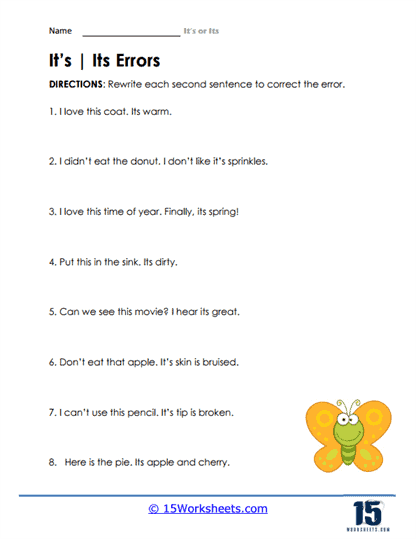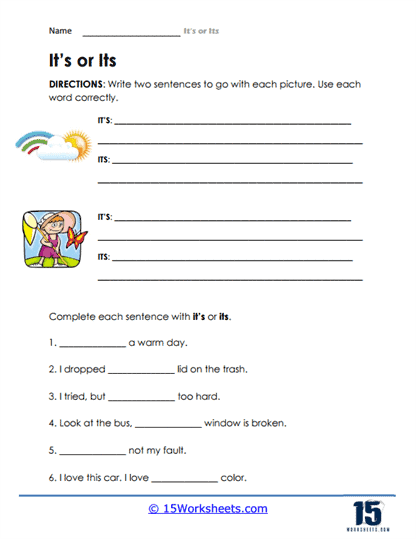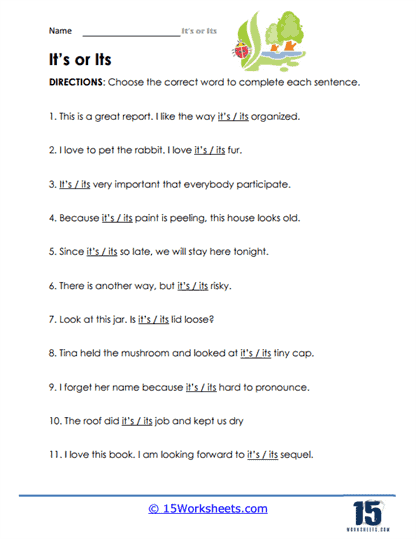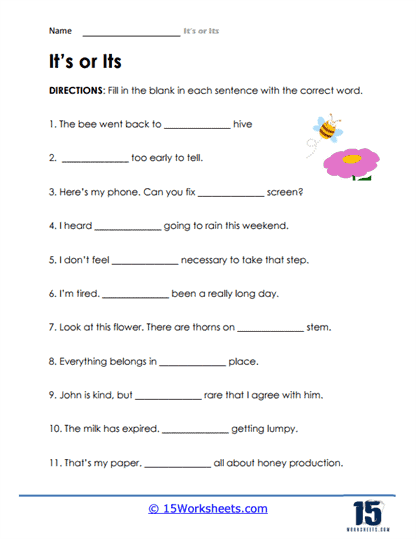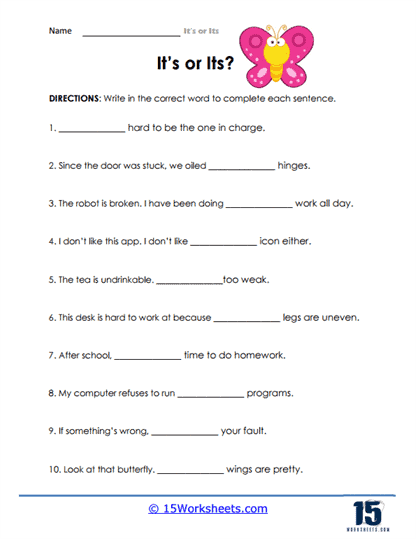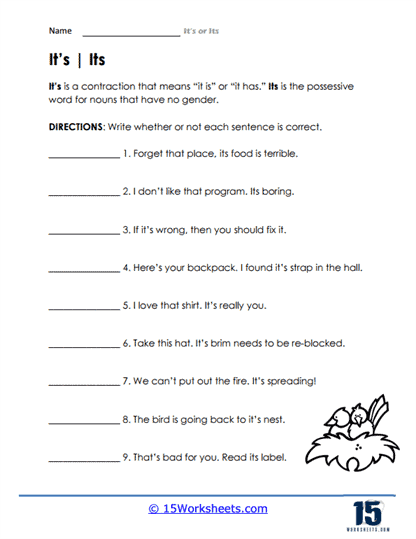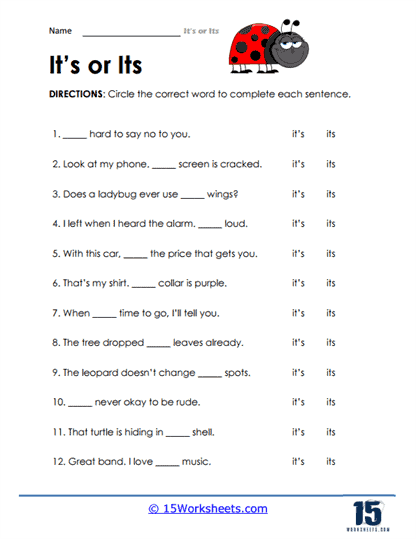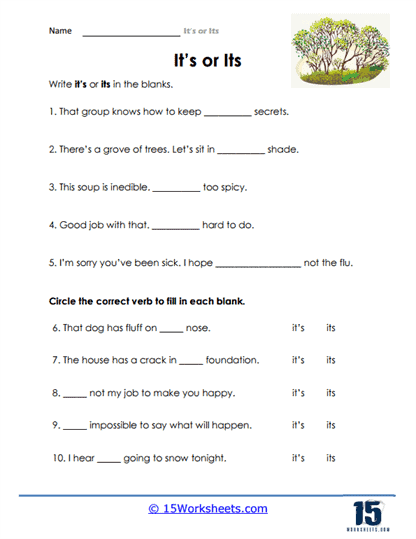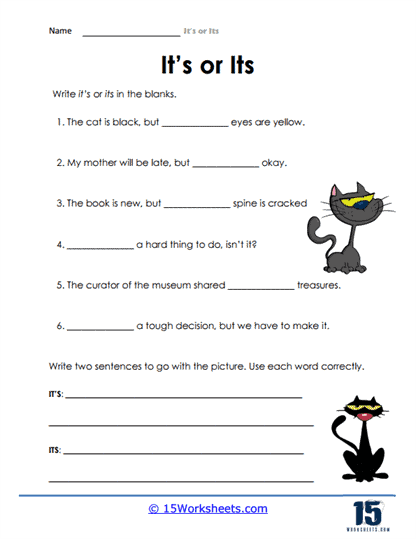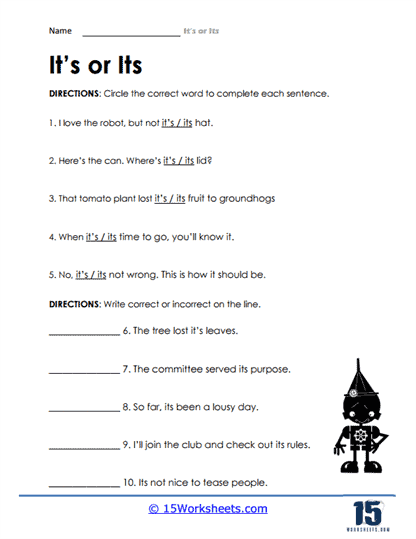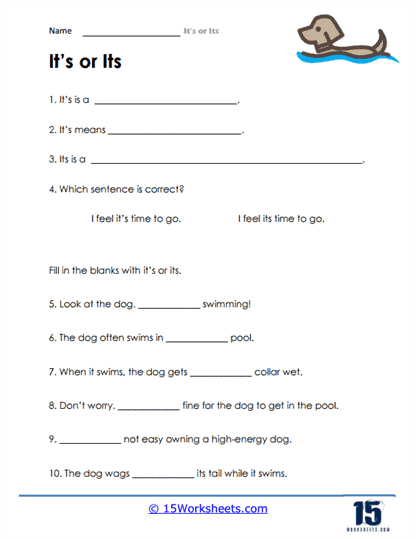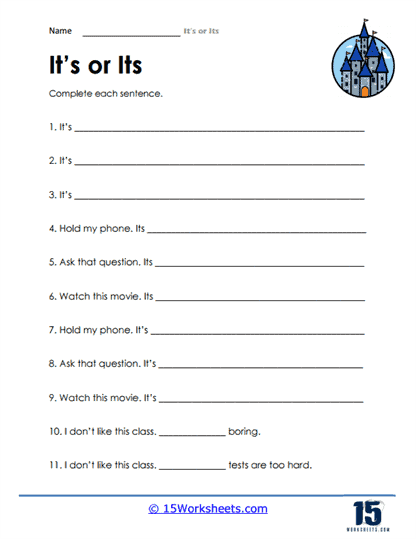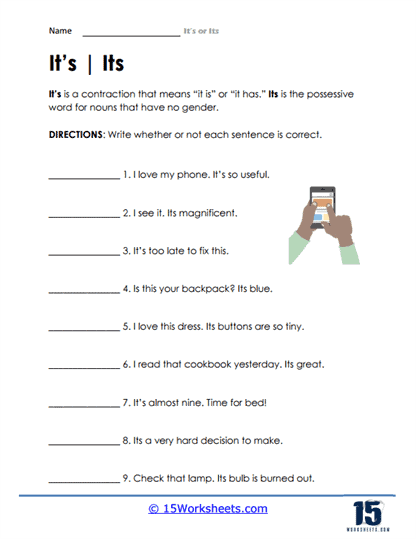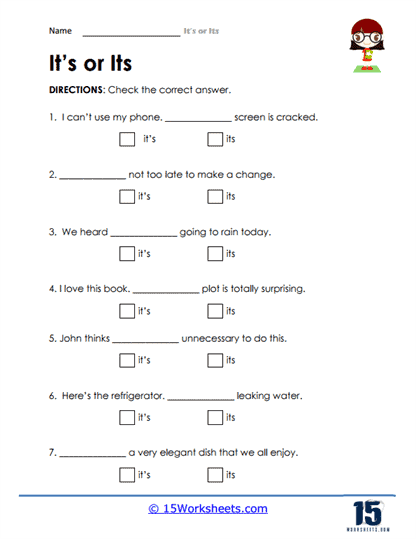It’s or Its Worksheets
All About These 15 Worksheets
This collection of free worksheets focus on the correct usage of “it’s” and “its” in grammar. Teachers can use these to help their students understand the difference between these two commonly confused words. “Its” is a possessive pronoun, while “it’s” is a contraction of “it is” or “it has.”
These worksheets include various exercises and activities, such as identifying correct and incorrect usage of “its” and “it’s” in sentences, correcting errors, and applying the correct usage in sentence writing. Some of these worksheets also provide explanations of the difference between “it’s” and “its”.
With these worksheets, students can improve their grammar skills and develop a strong understanding of the correct usage of “it’s” and “its.” Understanding the difference between these two words is crucial for effective communication in written English. Misusing them can lead to confusion, ambiguity, and inaccuracies in meaning.
Practicing the correct usage of this pair of words provide opportunities for students to expand their vocabulary and develop their critical thinking skills. By understanding the nuances of grammar rules, students can express themselves more precisely and creatively. Through these worksheets, students will:
- Learn when to use “it’s” and “its”;
- Rewrite incorrectly constructed sentences to reflect the proper usage of “it’s” and “its”;
- And use “it’s” and “its” correctly in their own sentences.
Overall, these worksheets provide students with a comprehensive and structured approach to learning and practicing the correct usage of these commonly confused words. They help students to develop their grammar skills, improve their writing abilities, and expand their vocabulary, which are crucial for effective communication in English.
When to Use “It’s” or “Its”
- The pendant broke free of its chain.
- The girl thinks it’s the fault of her younger brother.
The only difference between its and it’s is the apostrophe between t and s. They may look alike but have vast differences in their meanings. We use an apostrophe when a part of one word is removed and another word has been added. Take an example of you’re, which is a contraction of you and are. Similarly, the word “it’s” is a contraction of two words “it” and “is”, or “it” and “has.”
“It is” or “it’s” is a third-person singular pronoun, and it is generally used to describe inanimate things. However, “its” is a possessive of the pronoun “it”, and it means belonging of a thing.
The simplest way to know whether you’re using them correctly is to swap the word “it’s” with “it is”, or “it has”. If the sentence makes sense when you use either, then you will recognize the correct word that is supposed to be used.
The Use of “Its”
Its is a possessive form of the pronoun it, and it indicates possession or ownership. Normally we add an “s” after an apostrophe to a noun when we want to indicate that the noun is possessive of a thing. For example: “Sarah’s notebook means that the notebook belongs to Sarah.”
However, when we are converting the pronoun it to its possessive form, we do not add an apostrophe. The same goes for other personal pronouns like it, including your, their, our, his, her, etc. For example: “The house had its door barged in,” or “the cat was licking its tail.” Here, the word “its” indicates that the door belongs to the house, and the tail belongs to the cat.
Now suppose we replace the word “its” with “it’s” in these sentences. Since “it’s” is a contraction of “it”and “is/has,” then the above sentences would look like this: “The house had it is door barged in, and “the cat was licking it has tail.” These two sentences make absolutely no sense, which means that it’s is a word used incorrectly here.
The Use of “It’s”
“It’s” means either “it is,” or “it has.” It is a contraction or shortened form of these words and can be used when we want to speak quickly or reduce the number of words we want to use in our sentence. It is similar to adding an -‘s in front of a noun to indicate its possession, but it’s doesn’t indicate possession. Rather it is one word used in the place of two. Take a look at these examples:
- “Nash lost his dog’s leash, but he thinks it’s in his car.” (Here “it’s” is a contraction of “it” and “is.”)
- “This project is very important. It’s got to be completed today.” (Here “it’s” is a contraction of “it” and “has.”)
Now suppose we replace the word “it’s” with “its” in the above sentences.
- “Nash lost his dog’s leash, but he thinks its in his car.”
- “This project is very important. Its got to be completed today.”
These two sentences do not make proper sense, as the indication of belonging or possessiveness is useless in these situations.
Common Mistakes You Make When Using Its, or It’s
- Adding the apostrophe after s, like “its’,” is incorrect
- “Its” describes the same meaning of belonging as adding an -‘s after a noun or proper noun does. “Its cat” can also be written as “the grocery store’s cat.”
- “It’s” is only a contraction of “it is,” or “it has,” and not “it was.”


